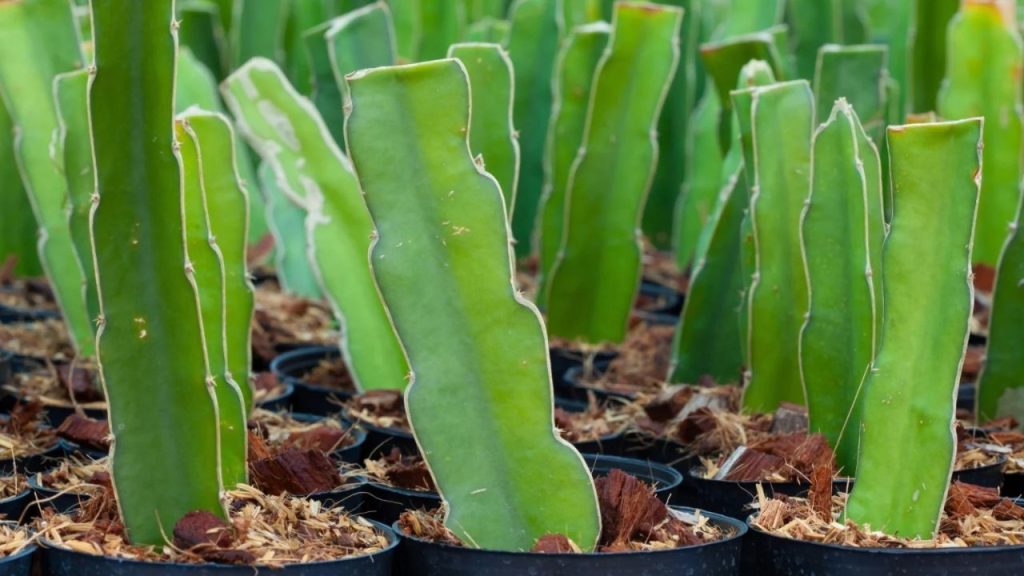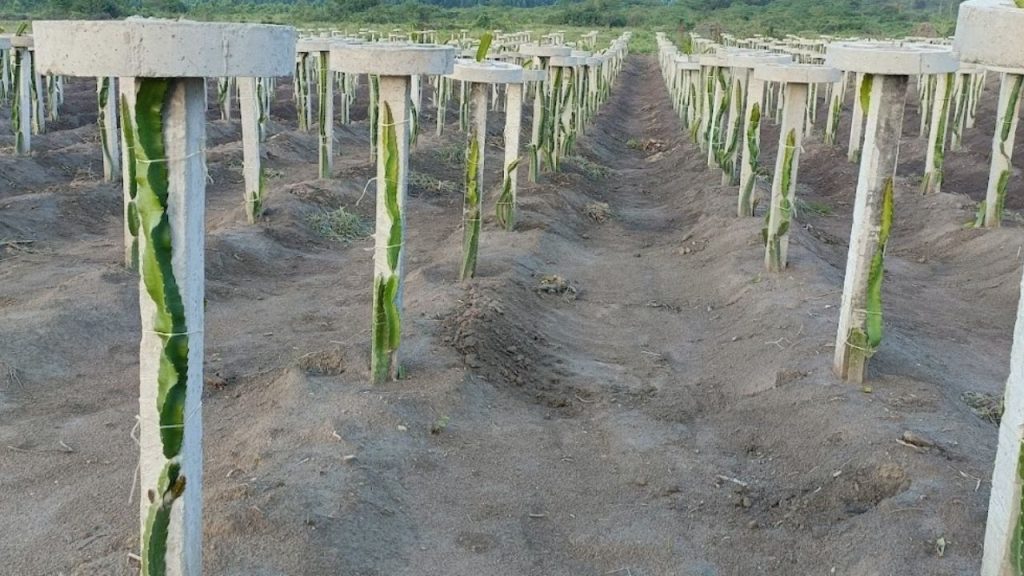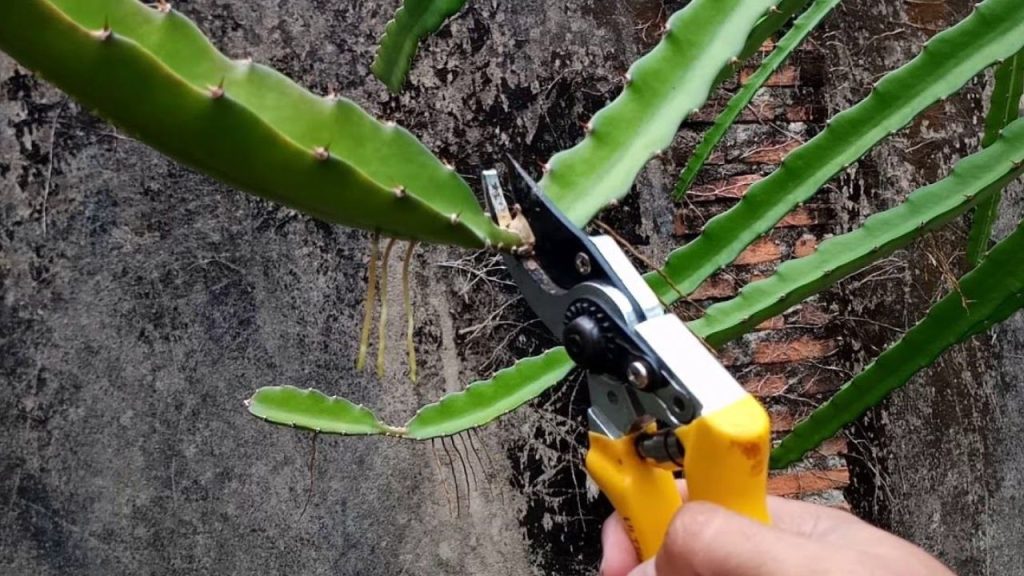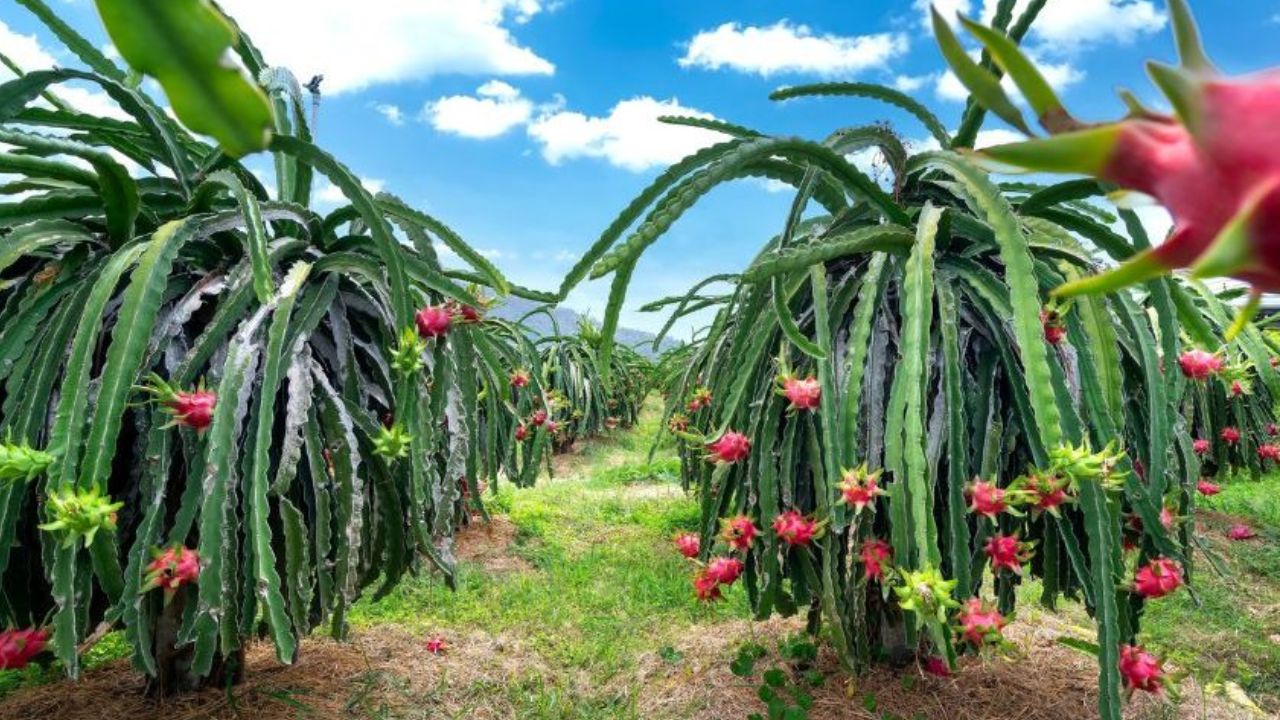12 Guide to Start a Dragon Fruit Farming
Introduction
Dragon fruit, also known as pitaya or pitahaya, is a striking tropical fruit that has gained popularity worldwide for its unique appearance, rich nutrient profile, and health benefits. Native to Central America, it is now cultivated in various parts of the world including Vietnam, Thailand, Malaysia, Israel, and increasingly in India, the Philippines, and parts of Africa and Australia.
This cactus species, belonging to the genus Hylocereus and Seleni cereus, is well-suited for arid and semi-arid regions due to its low water requirement and high resilience. Dragon fruit farming is emerging as a lucrative venture for farmers due to increasing market demand and relatively low maintenance compared to other fruit crops.
This article provides an in-depth overview of dragon fruit farming, including its climatic requirements, propagation methods, planting techniques, pest management, harvesting, and market potential.
-
Varieties of Dragon Fruit
Dragon fruits are primarily categorized based on the color of their skin and flesh:
- Hylocereus undatus: Red skin with white flesh (most commonly cultivated).
- Hylocereus costaricensis: Red skin with red flesh (deeply pigmented and sweet).
- Hylocereus megalanthus: Yellow skin with white flesh (smaller in size, sweeter flavor).
Each variety has its own set of climatic preferences and market value, with red-fleshed varieties often commanding higher prices due to their appealing appearance and antioxidant content.
-
Climate and Soil Requirements
-
Climate
Dragon fruit thrives in tropical and subtropical climates. It prefers temperatures between 20°C to 35°C. The plant is frost-sensitive and cannot survive prolonged exposure to temperatures below 5°C.
-
Ideal climatic conditions:
- Sunlight: At least 6–8 hours of direct sunlight daily.
- Rainfall: 600–1300 mm per year.
- Altitude: Up to 1500 meters above sea level.
-
Soil
Dragon fruit can adapt to a variety of soil types but grows best in well-draining sandy loam with a pH range of 6 to 7.5. Proper drainage is essential to prevent root rot, a common problem in poorly aerated soils.
-
Propagation Methods
Dragon fruit can be propagated via seeds or stem cuttings, though the latter is preferred due to faster fruiting.

-
Seed Propagation
While seeds germinate easily, they take 3–5 years to produce fruit, making this method suitable primarily for breeding and experimentation.
-
Stem Cutting Propagation
Cuttings from mature, healthy plants are 30–50 cm in length and can be directly planted into the soil. Root development begins within 10–15 days under optimal conditions, and fruiting can start within 12–18 months.
-
Land Preparation and Planting
Before planting, the land should be cleared, plowed, and leveled. Dragon fruit requires support structures as it is a climbing cactus.
-
Support System
Concrete or wooden poles about 1.5–2 meters high are installed for each plant. A circular or square frame can be placed on top of the pole to allow the plant to cascade downward, which enhances flowering and eases harvesting.
-
Planting Density
- Spacing: 2 meters x 2 meters is ideal.
- Density: 1700–1800 plants per acre.
Planting is best done during the early rainy season to ensure adequate moisture for root development.

-
Irrigation and Fertilization
-
Irrigation
Dragon fruit requires moderate watering. Overwatering should be avoided as it can lead to fungal infections and root rot. Drip irrigation is ideal for maintaining optimal moisture levels. Click here
-
Watering schedule:
- Twice a week during dry periods.
- Avoid watering during heavy rains.
-
Fertilization
Balanced fertilization is key to optimal growth and yield. Both organic and chemical fertilizers can be used.
- Organic manure: 10–15 kg of compost or well-decomposed farmyard manure per plant per year.
- Chemical fertilizers: A combination of nitrogen, phosphorus, and potassium (NPK) in a 2:1:2 ratio applied quarterly.
- Micronutrients: Application of magnesium, zinc, and boron improves fruit quality and plant health.
Foliar sprays of seaweed extract or micronutrients during the flowering period can boost fruit set.
-
Flowering and Pollination
Dragon fruit plants typically start flowering after 8–12 months. Flowers are large, fragrant, and nocturnal, blooming at night and lasting only until morning.

-
Pollination
Pollination is crucial for fruit set. While some varieties are self-pollinating, others require cross-pollination. Hand pollination is commonly practiced increasing yield, especially in commercial setups.
- Natural pollinators: Bats, moths, and bees.
- Artificial pollination: Transferring pollen manually using a brush during night hours.
-
Pests and Diseases
Though dragon fruit is relatively pest-resistant, certain issues may arise:
-
Common Pests
- Aphids.
- Mealybugs.
- Thrips.
- Ants (which protect aphids and mealybugs).
-
Diseases
- Stem rot: Caused by fungal infections (e.g., Fusarium spp.).
- Anthracnose: Affects fruit, causing dark lesions.
- Bacterial soft rot.
-
Management practices:
- Regular pruning to maintain air circulation.
- Avoid waterlogging.
- Use of organic fungicides or neem oil.
- Application of copper-based fungicides during wet seasons.
-
Pruning and Training
Pruning is essential to shape the plant and encourage more flowering branches.
- Initial pruning: Remove weak or diseased shoots.
- Training: Direct main stems to climb up support poles.
- Maintenance pruning: Encourage lateral branching at the top of the trellis.
Training ensures that the plant forms a canopy that receives adequate sunlight and facilitates easier fruit harvesting.

-
Harvesting and Post-Harvest Handling
-
Harvesting
Fruits mature 30–50 days after flowering. A mature dragon fruit is bright in color and slightly soft to the touch.
-
Harvesting tips:
- Use sharp knives or clippers to avoid damaging the plant.
- Harvest in the early morning or late evening to prevent heat damage.
- Handle fruits carefully to avoid bruising.
-
Yield
- Initial yield: 5–7 tons per acre.
- Full maturity yield (after 3–4 years): 10–12 tons per acre.
- Fruit-bearing lifespan: Up to 20 years with proper care.
-
Post-Harvest Handling
Fruits should be sorted, cleaned, and packed in ventilated boxes. Cold storage (8–10°C) can prolong shelf life up to 4 weeks.
-
Economics of Dragon Fruit Farming
-
Initial Investment
- Land preparation and support structures.
- Saplings or cuttings.
- Irrigation setup.
- Fertilizers and pesticides.
- Estimated cost (per acre): $4,000–$6,000.
-
Returns
- Break-even point: 2nd or 3rd year.
- Profit margins: High due to increasing demand and premium market price.
- Price range: $2–$6 per kg depending on variety and location.
-
Value-Added Products
- Dragon fruit juice, jam, wine, and dried snacks.
- Nutraceuticals and cosmetic products from peel extracts.
- Pigments used in natural food coloring.
-
Global and Local Market Potential
The global dragon fruit market is expanding due to growing awareness of its health benefits. Major importers include the United States, European Union, China, and Middle Eastern countries. Domestically, consumption is rising in urban and semi-urban areas, driven by health-conscious consumers. Click here
-
Opportunities:
- Export potential with proper grading and certification.
- Organic farming for premium pricing.
- Agritourism and direct farm-to-market models.
-
Challenges and Future Prospects
-
Challenges
- Lack of standardized cultivation practices.
- Limited research and extension services in new growing regions.
- Post-harvest losses due to poor infrastructure.
-
Future Prospects
- Breeding programs for self-pollinating and disease-resistant varieties.
- Mechanization of harvesting and post-harvest processing.
- Expansion into value-added processing industries.
Conclusion
Dragon fruit farming is a promising horticultural venture with high economic and nutritional value. With proper knowledge, investment, and care, farmers can enjoy sustainable yields and tap into growing domestic and international markets. Its adaptability to arid conditions and low maintenance needs makes it a future crop for food security and rural entrepreneurship.
As awareness and demand for exotic fruits grow, dragon fruit stands out as not just a commercial crop, but a symbol of sustainable agriculture and innovation.

